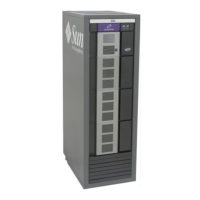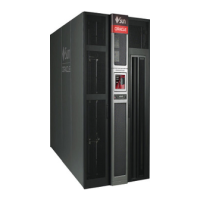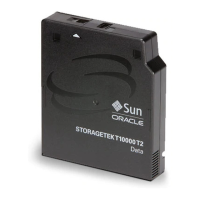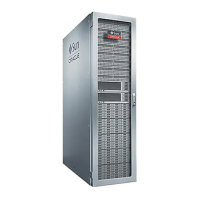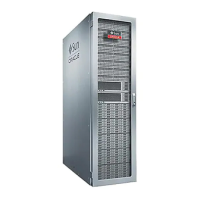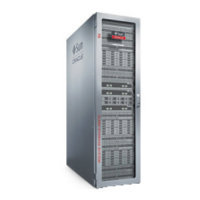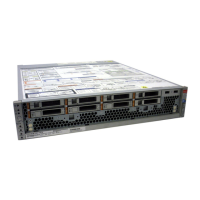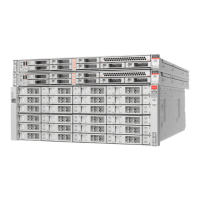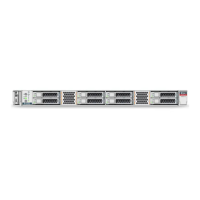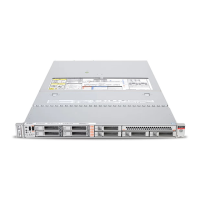The Fibre Channel Standard
16 SL150 Interface Reference Manual Julyl 2017
2. Targets: A device (SL150 library tape drives) containing logical units and target
ports that receives requests for processing and sends responses to an initiator. The
target device for this document is an HP LTO-5, HP LTO-6, IBM LTO-6 or IBM
LTO-7 tape drive.
3. Expanders: Devices that provide large storage environments the ability to connect
multiple targets and initiators through a switched device for scalability and
redundancy. SAS benefits include improved performance, simplified cabling with
the mini SAS connectors (iPass), and lower power requirements.
The Fibre Channel Standard
The SL150’s implementation of Fibre Channel conforms to the American National
Standards Institute (ANSI), National Committee for Information Technology
Standards (NCITS) formerly X3.
Overview
• Serial connection: Copper (electrical) or Fiber (optical) transmissions
• Multiple Initiator Support
• Information transparent
• 100 MB/s data transfer rates (and higher)
• Scalable for media rates, distance, media, and protocols
Implementation
Library:
• Arbitrated loop
• FCP (SCSI-3) command set for medium changer devices
• Class 3 level of service
• Private Loop operation
• Public Loop operation
• Direct fabric attach operation
• Hard-assigned port addresses (AL-PA)
• Basic and extended link services
• Connections to an external hub (or switch)
• Data transfer rates of 100 MB/s
• Standard approved length shortwave fibre optic cables
• Multimode laser operating at 780 nanometers (shortwave) non–OFC
Hub:
• Multiple ports
• Standard approved length fibre optic and copper cables
• Multimode laser operating at 780 nanometers (shortwave) non–OFC
• Single mode laser operating at 1300 nanometers (longwave)
• Cascading hub attachments
• Gigabit Interface Converter (GBIC) connections in the hub
Switch:
• AttachmentAttachment to FL_Ports is supported.
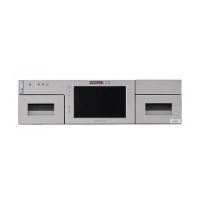
